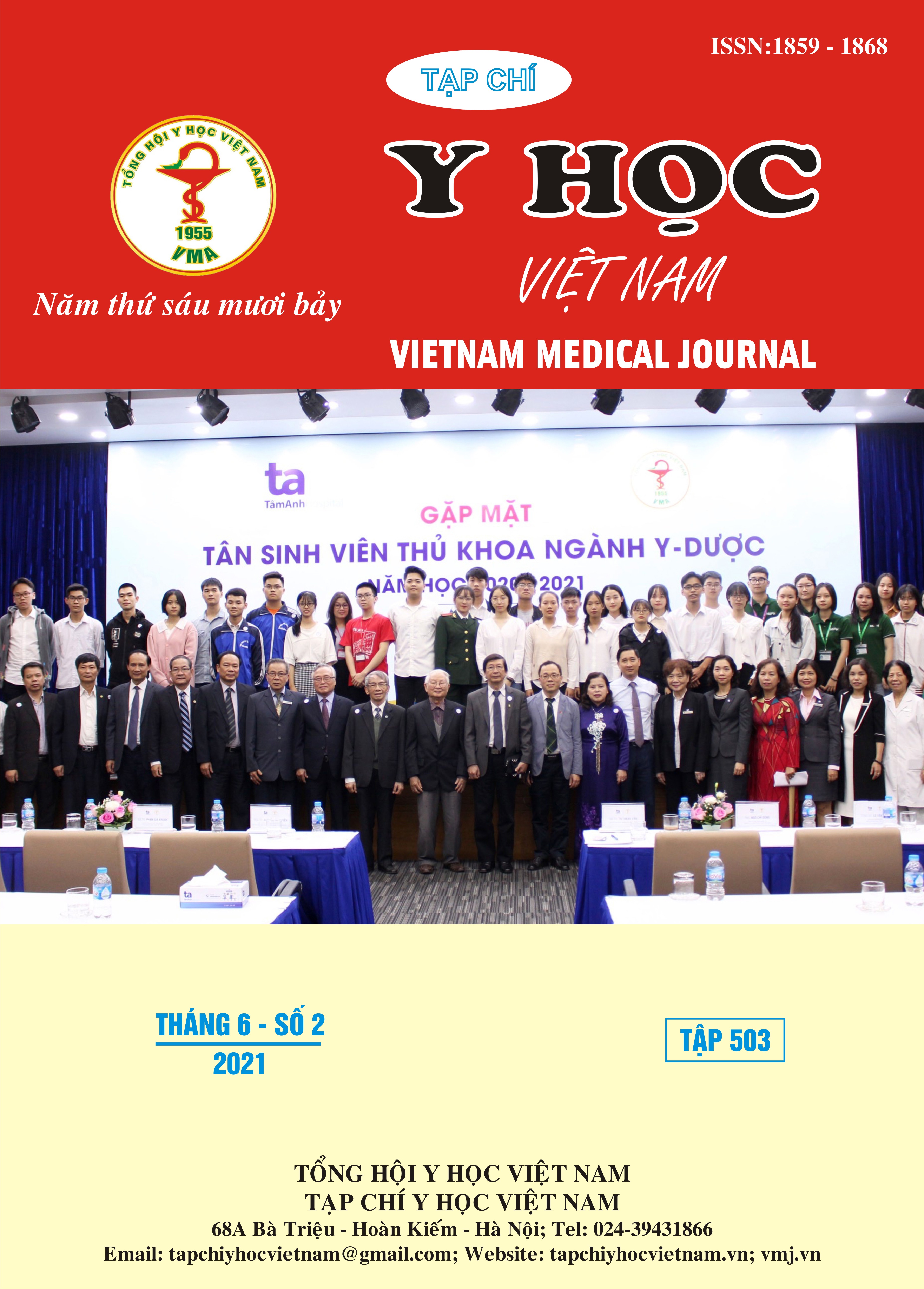CLINICAL AND SUBCLINICAL CHARACTERISTICS OF ACUTE MYOCARDIAL INFARCTION WITH ST ELEVATION AT NGHE AN GENERAL FREINDSHIP HOSPITAL
Main Article Content
Abstract
Backgruond: Acute myocardial infarction, the first causes of morbidity and mortality worldwide, is the most frequent cause of angina in patients with serious cardiovascular disease. ST-segment elevation acute MI is a fairly common disease today, so we study this topic. Objective: To study the clinical and laboratory characteristics of patients with ST-segment elevation acute myocardial infarction with early percutaneous coronary intervention. Methods: A cross-sectional descriptive study. All 106 patients diagnosed with acute MI with ST-segment elevation received percutaneous coronary intervention at the Huu Nghi Nghe An General Hospital from January 1, 2020 to December 12, 2020. Results: Mean age was 71.67±13.13 years old. Age > 60 years old accounts for 78.3%. Male rate is 72.6% and female rate is 27.4%. Risk factors for myocardial infarction such as hypertension 58.5%, dyslipidemia 45.2%. Symptoms of chest pain are 100%, of which 78.3% are typical chest pain. The patient's Killip score was mainly in the Killip I and II groups with the rate of 67% and 23.6%, respectively. The most common lesion on electrocardiogram was posterior inferior MI with 49.1%. There were 82 cases of complete occlusion and 24 cases of stenosis over 70% on coronary angiography. The rate of LAD stenosis and RCA was similar at 47.17%. Injury to one coronary artery accounted for 64.2% but also 10.3% of patients had damage to 3 coronary arteries. Conclusion: All patients had risk factors, especially hypertension and dyslipidemia. All patients had onset of chest pain, of which 78.3% were typical chest pain. The location of damage to the coronary artery branches is common, especially damage to one branch, accounting for 64.2%, but also up to 10.3% of patients have damage to 3 coronary arteries.
Article Details
Keywords
myocardial infarction, coronary artery, LAD
References
of Myocardial Infarction. Myocard Infarct.
2. Sanchis-Gomar F., Perez-Quilis C., Leischik R., et al (2016). Epidemiology of coronary heart disease and acute coronary syndrome. Ann Transl Med 2016;4(13):256.
3. Nguyễn Văn Tân, Châu Văn Vinh (2019). Nghiên cứu đặc điểm tổn thương động mạch vành ở bệnh nhân cao tuổi nhồi máu cơ tin cấp thất phải. Tạp chí y học TP. Hồ Chí Minh, 23(2):176 – 181.
4. Huỳnh Kim Phượng, Trương Thành Viễn (2016). Đặc điểm lâm sàng và cận lâm sàng bệnh nhân từ 45 tuổi trở lên bị nhồi máu cơ tim cấp kèm đái tháo đường type 2 (2016). Tạp chí y học TP. Hồ Chí Minh, 20(2):220 – 233.
5. Nguyễn Thị Thanh Trung (2014). Nghiên cứu đặc điểm lâm sàng và cận lâm sàng, kết quả điều trị nhồi máu cơ tim cấp có ST chênh lên tại bệnh việ đa khoa Thái Bình. Y học thực hành (905). Số 2/2014, tr 16-19.
6. Lê Cao Phương Duy (2019). Hiệu quả sớm của thủ thuật hút huyết khối trong can thiệp mạch vành qua da thì đầu ở bệnh nhân nhồi máu cơ tim cấp có ST chênh lên. Tạp chí y học TP. Hồ Chí Minh, 23(6):83-90.
7. Trần Hòa, Vũ Văn Hoàng, Nguyễn Hữu Khoa Nguyên, Trương Quang Bình (2012). Kết quả can thiệp động mạch vành tiên phát (thì đầu) trong điều trị nhồi máu cơ tim cấp có ST chênh lên tại Bệnh viện Y Dược TP Hồ Chí Minh.Tạp chí Y Học Thành Phố Hồ Chí Minh, 16(1):94-100.


